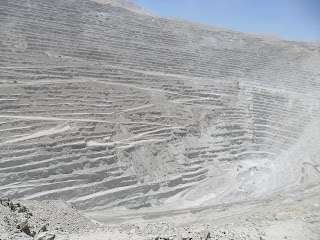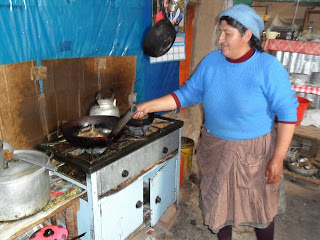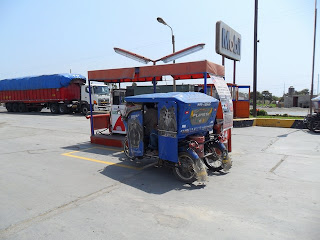November 23, 2010
First - Happy Birthday to my brother Jackie - man we are all getting old!
Yesterday we rode from Puno/Lake Titicaca Peru in the High Andes to Tacna Peru on the coastal desert. We rode over 400 miles - by far long our longest ride in Latin America. The riding was really good through long sweeping curves and very little traffic.
Our ride began at over 12,000 feet and went up to where we spent most of the morning above 14,000 feet before dropping down to a low of 482 feet and then climbing back to an average of 2000 feet for the remainder of the day. Again we saw many herds of llamas, alpacas and vicunas in the high plains. We stopped by a large lake to photo a flamengo colony. We didn't know it at the time but the Jean, the Frenchman, we met on the Stahlratte was stopped about one quarter of a mile down the road from us with his wife and friends. They were viewing the same colony. We were traveling in opposite directions. This is the second time Jean has spotted us in Peru and notified us by email that night. Small world!
As many of you have know, I have been sick with digestive problems and a very high temperature. This was over the weekend and I am glad to report that I am doing much better but still with a tender stomach.
Today we crossed into Chile for a another two hour experience with a border crossing with the last item to turn in a form with several stamps into a booth about 100 meters past the border. My turn went fine, but when I looked in my mirror I could tell Roger and the official were trying to sort things. Apparently, someone missed putting one of the boo-coo stamps on his form. He had to walk back to the border offices and find the person with the precious stamp. I am not sure how many countries there are in the world (Ms. Debbie's Fourth grade class please research this for me and provide the answer when I present my trip to your class), but we are amazed that each of them can seemingly come up with a unique way of entering and exiting there country. The good news is that we have only one more border crossing left or possibly two depending on where we ship our motorcycles from.
First item of business in a new country is to find a bank o ATM machine and buy local cash.
That was accomplished about 10 miles south of the border and yahoo now that we have local maps on our GPS's which provide us such information this task will be mcuh easier.
Chile is a very narrow country east to west being wedged between the Andes mountain chain on the east and the Pacific Ocean on the west. The northern region along the coast is all desert and even more stark than the deserts of Peru. At times we would ride through miles and miles of varying desert landscapes without seeing a single blade of vegetation unless we dropped down into a valley floor while crossing from one high area to the next. For a while we rode along the rim of a canyon that was about 3000 feet deep - no guard rails, but there were several areas where stones had fallen into the road.
Tomorrow, we will continue our ride into the Atacama Desert which is one of the dryest regions of the world.
One of the first observations about Chile is that the driving is civilized. Let's see when was the last time we noted this - not on this trip? They use their signals, they don't constantly blow their horns, and they stop for pedestians in crosswalks. Where did these people come from? In all honesty, Roger and I just had a conversation saying how thankful we are that we are out of Peru. We spent longer there than anywhere else and it is probably a small miracle that we were not run over by a taxi or a bus, and that we did not run over some person or animal as they all walk out in front of moving traffic. Maybe tomorrow I will stop and erect a shine to St.Christopher or some other saint for this miracle. There seems to be plenty of those type shines along the roadside - here in Chile most so far have been honoring San Sebastian.

































































